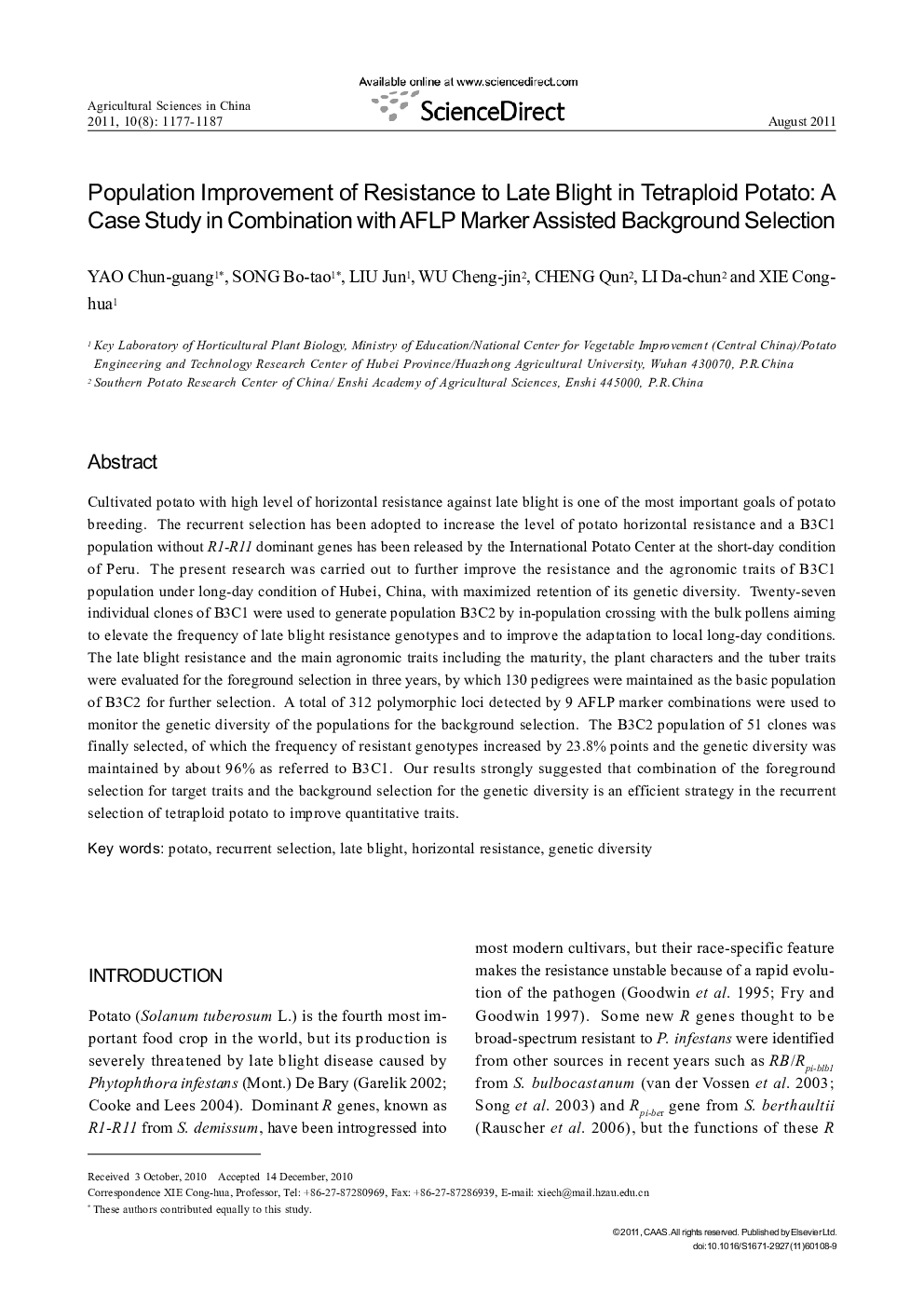| Article ID | Journal | Published Year | Pages | File Type |
|---|---|---|---|---|
| 4489961 | Agricultural Sciences in China | 2011 | 11 Pages |
Cultivated potato with high level of horizontal resistance against late blight is one of the most important goals of potato breeding. The recurrent selection has been adopted to increase the level of potato horizontal resistance and a B3C1 population without R1 -R11 dominant genes has been released by the International Potato Center at the short-day condition of Peru. The present research was carried out to further improve the resistance and the agronomic traits of B3C1 population under long-day condition of Hubei, China, with maximized retention of its genetic diversity. Twenty-seven individual clones of B3C1 were used to generate population B3C2 by in-population crossing with the bulk pollens aiming to elevate the frequency of late blight resistance genotypes and to improve the adaptation to local long-day conditions. The late blight resistance and the main agronomic traits including the maturity, the plant characters and the tuber traits were evaluated for the foreground selection in three years, by which 130 pedigrees were maintained as the basic population of B3C2 for further selection. A total of 312 polymorphic loci detected by 9 AFLP marker combinations were used to monitor the genetic diversity of the populations for the background selection. The B3C2 population of 51 clones was finally selected, of which the frequency of resistant genotypes increased by 23.8% points and the genetic diversity was maintained by about 96% as referred to B3C1. Our results strongly suggested that combination of the foreground selection for target traits and the background selection for the genetic diversity is an efficient strategy in the recurrent selection of tetraploid potato to improve quantitative traits.
